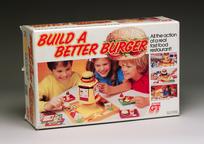









Empty tin of Glucose with Vitamin D, made by Savory & Moore Ltd, London, UK
Advertised as “an ideal pharmaceutical product for use in all conditions calling for an increase in sugar and calcium” particularly for malnutrition and for those recovering from illness The manufacturers also promised it was made with a tasteless fish-liver oil concentrate, a source of vitamin D. London-based chemists and druggists Savory and Moore were in business between 1794 and 1992.
After it was discovered that Vitamin D could be added to foods in 1924, Britain and the United States began to fortify food, drinks, and toiletries. These products were found to be beneficial in treating vitamin deficiency diseases like rickets.
Details
- Category:
- Nutrition & Food Technology
- Object Number:
- 2017-116
- Materials:
- tin (metal)
- Measurements:
-
overall: 132 mm x 100 mm x 62 mm,
- type:
- vitamin supplement
- credit:
- Purchased




